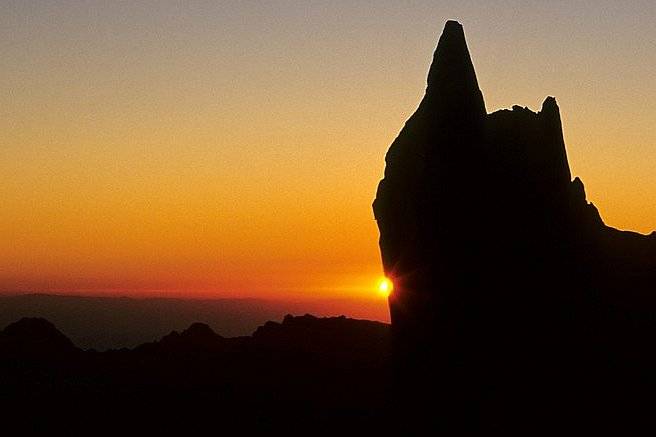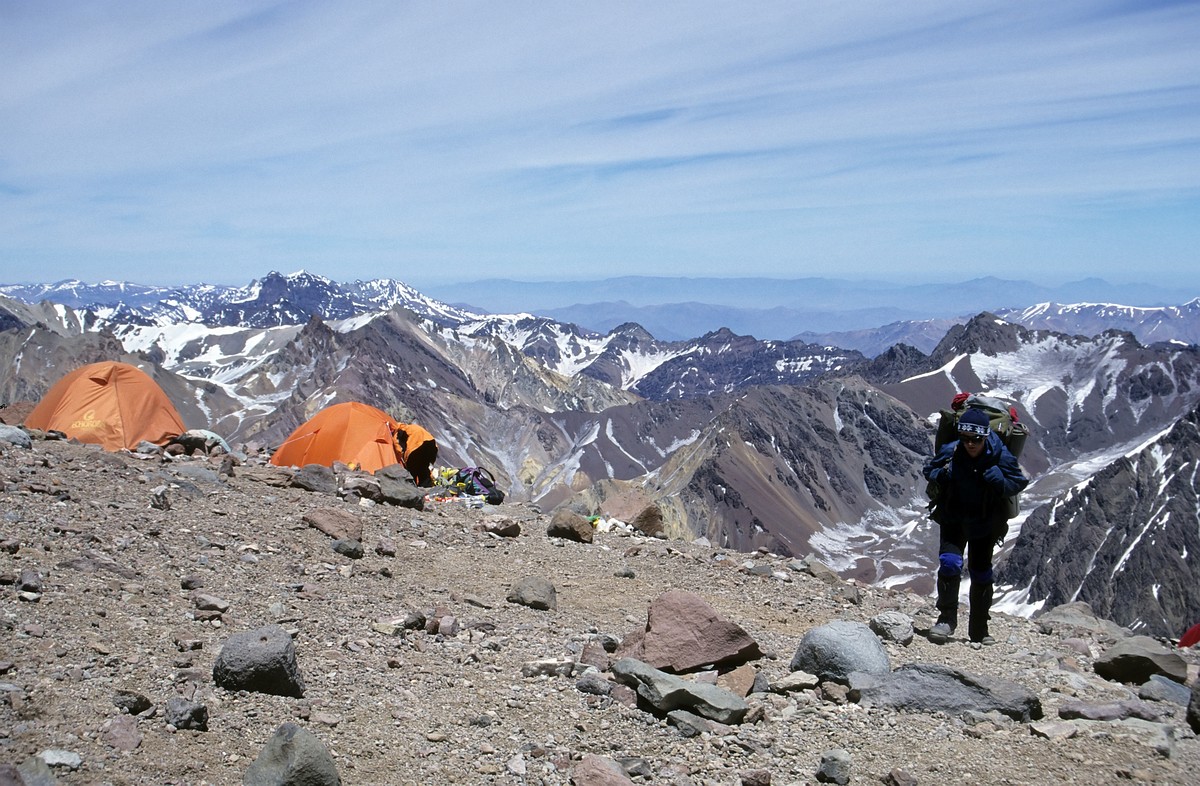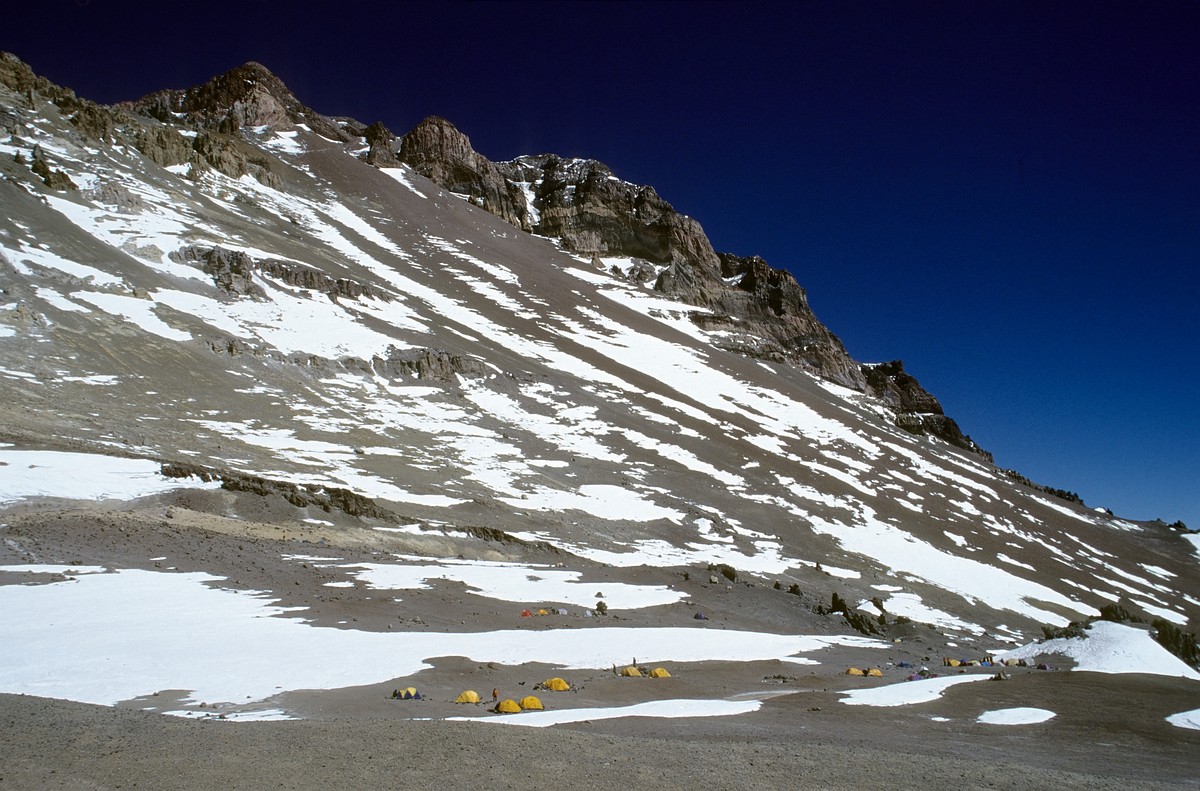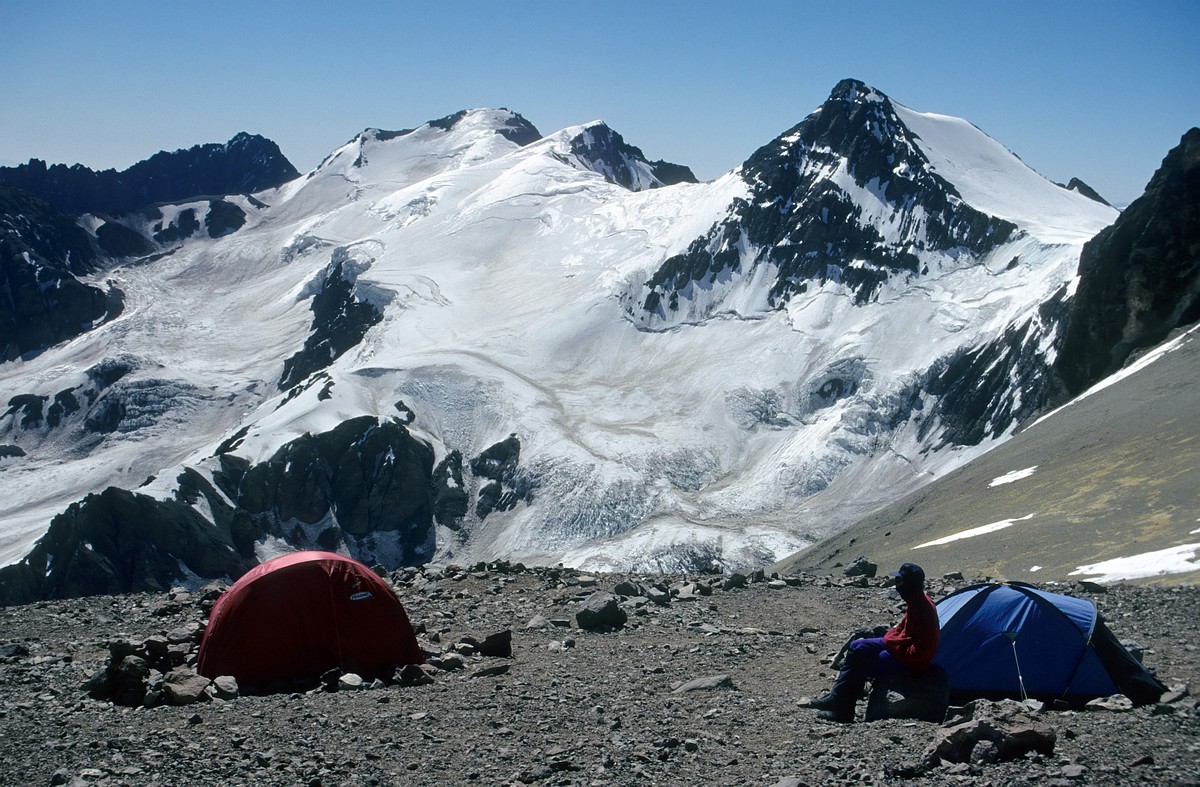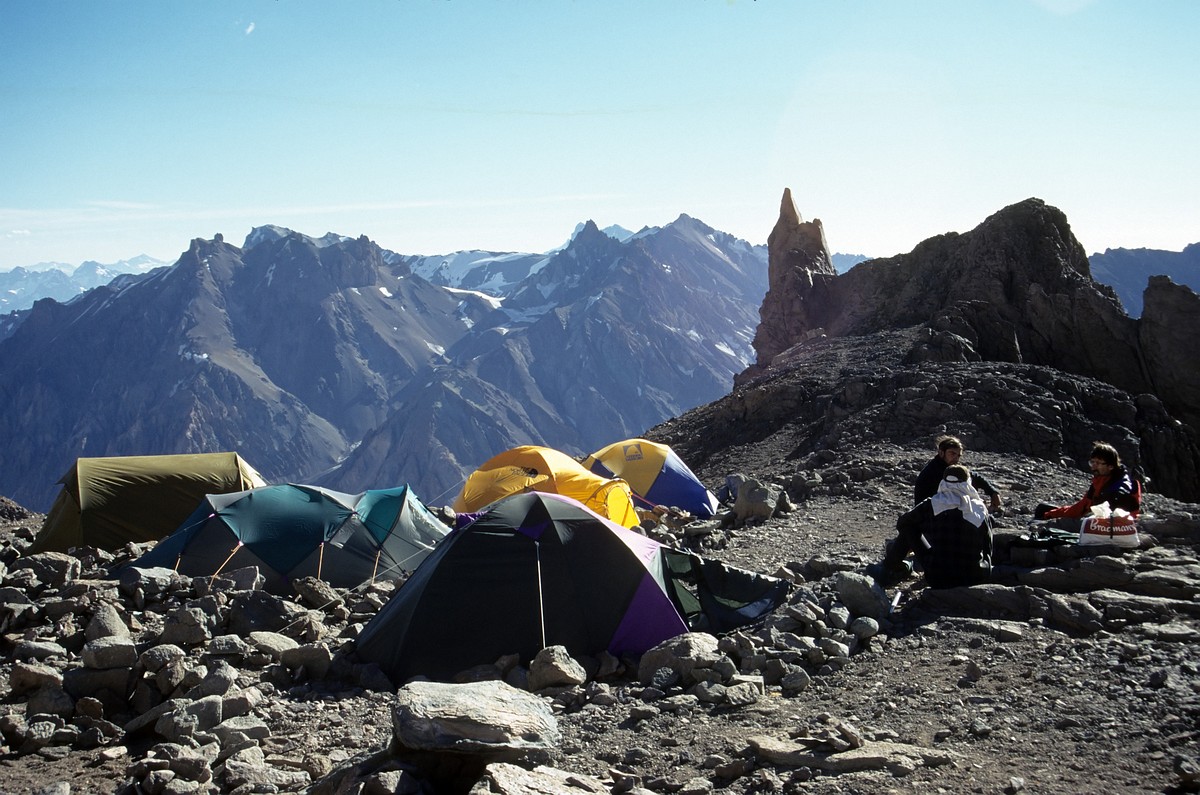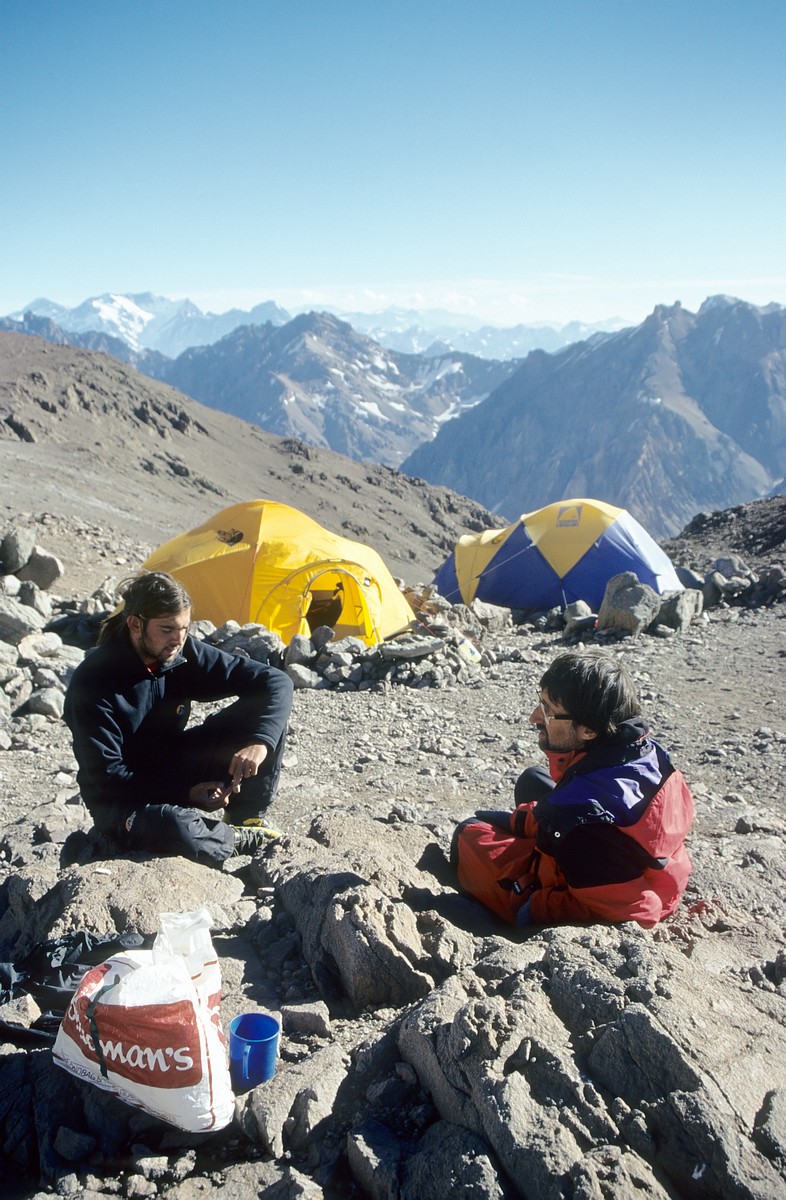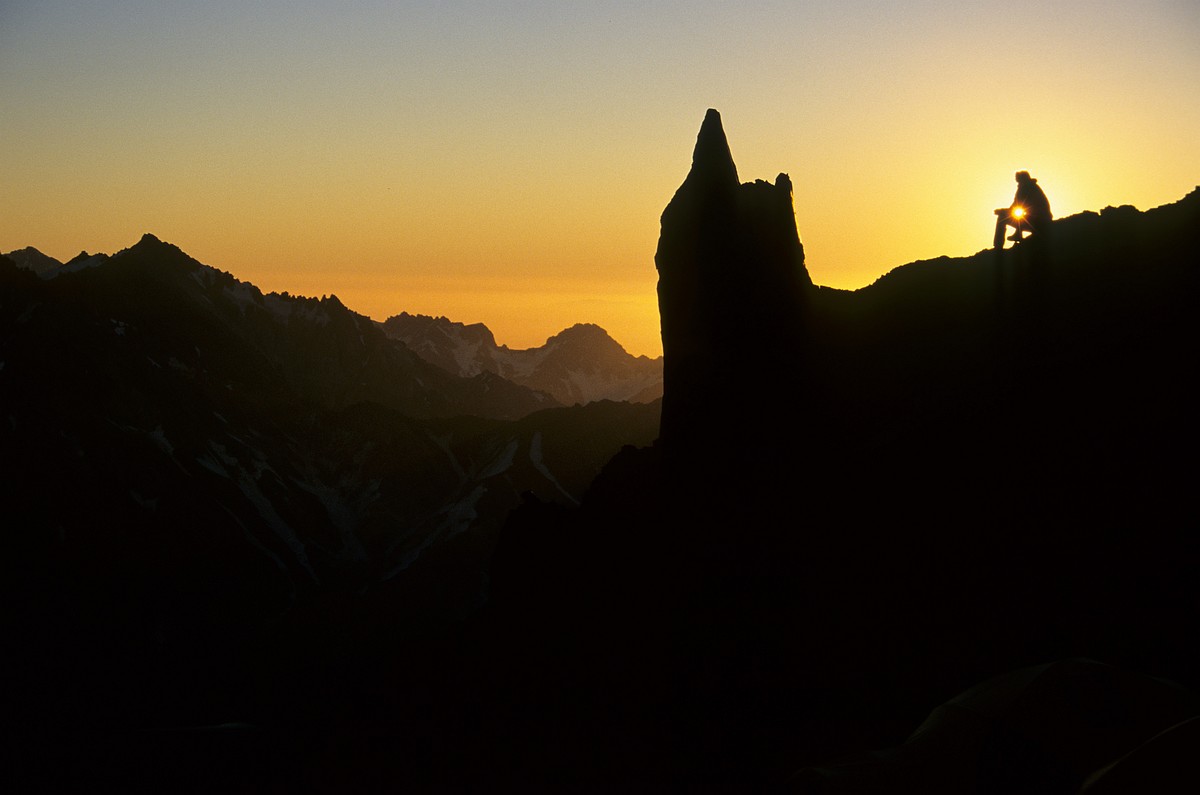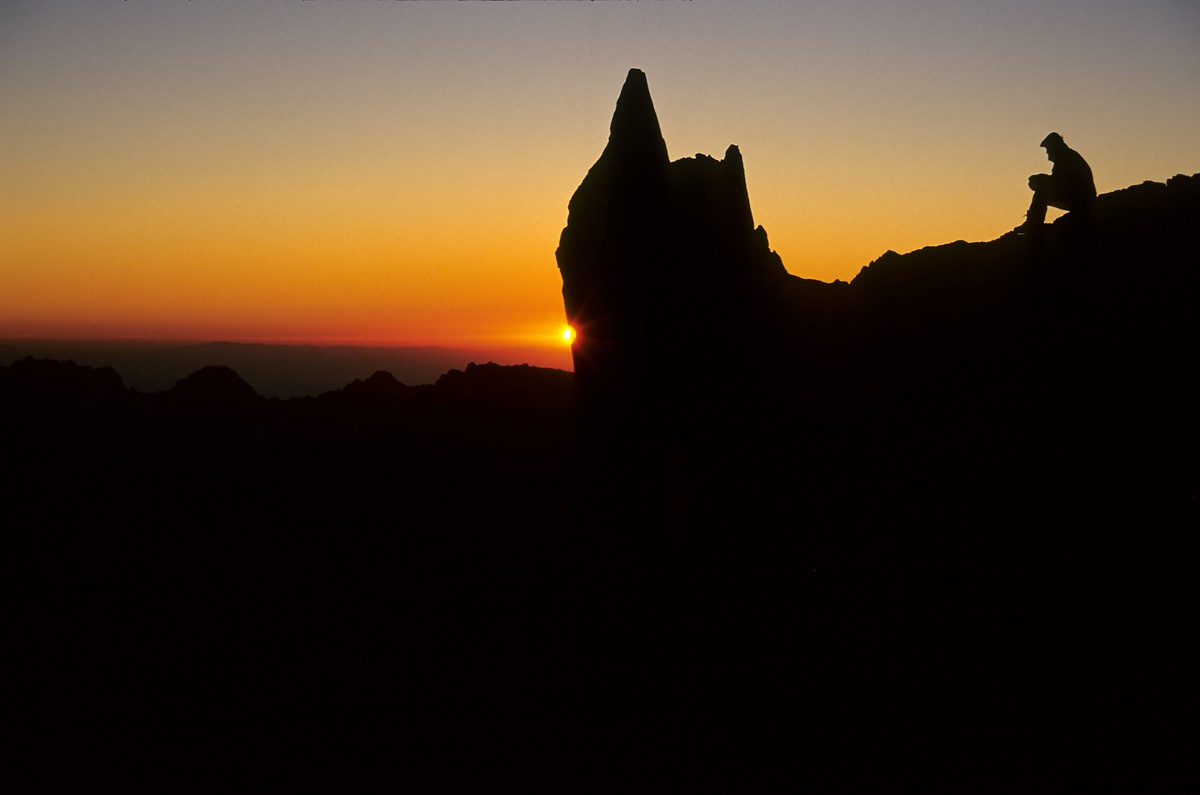Soon after midnight I woke up and got the impression that something had changed. The wind was still just as strong, and still making just as much noise, but my tent was no longer being flattened. This could mean only one thing – the wind had gone round to the west, and was hitting the foot end of the tent. With this pleasant thought I fell asleep again.
At 9:15 on 15th January I opened the door, and found that the weather was back to normal – the gusts of jetstream wind had disappeared completely, and there were no clouds on the summit or anywhere else. I got up to inspect the damage. There wasn’t any. No rocks had moved, no pegging points had ripped, no seams were weakened, no guy lines had broken. Nothing. The tent looked exactly as it had done when I had just put it up in the relatively gentle conditions of the previous evening. I had expected that at very best I would have to do some minor repairs, and tighten all the pegging points, but in the end I just walked round the tent in disbelief, got back in it and made breakfast.
Tim headed off early to take his cache up to Nidos. He was followed by Smiler and his American acquaintance, together with Smiler’s client. The American left me his surplus snow as he left. He commented that he had spoken to the guardaparques in basecamp over a handheld radio he had brought with him, and said that the twenty four hour forecast was for more high winds and precipitation. This seemed rather hard to believe, as the sky was completely blue, with nothing nasty showing on the horizon.
I took it easy – I was suffering a sharp abdominal pain, and I couldn’t work out what it was. It occurred to me that the summit of Aconcagua would not be a good place to suffer appendicitis! Dan and Jim were staying put for the day, as they had brought everything up with them in one go, and intended to take everything up to Nidos the following day. Towards late morning I loaded up what had constituted my cache at Canada, checked that my rather heroic little tent was still secure, and headed uphill.
After half an hour I saw Tim in the distance, coming downhill at great speed. When we met, we sat down to have a bite to eat and a mini conference, while Tim’s dust settled. Tim had left Nidos fifteen minutes previously, he said, which made it sound very close. However, he estimated that I had an hour and a half to go. He said that Nidos was very scenic, with stunning views towards the north, and plenty of space to camp. This sounded good. I resumed plodding slowly uphill, and Tim disappeared downhill in his cloud of dust. Half an hour later I was just nearing a part where the angle of the slope eased, when I glanced downhill and saw Tork waving from about a hundred metres below me. I waved back, and then carried on over the lip, finding that I had just arrived at Camp Alaska.
The layout of the upper part of the mountain was suddenly much clearer. Straight in front of me I could see the Gran Acarreo – the huge steeply sloping boulder field that stretches over two km from Camp Alaska right up to the bottom of the Canaleta. This was bounded on my right by the west face of the mountain, and on my left by the north-west ridge which the Normal Route follows. It was now more obvious which of the various distant rocky peaks above was the summit. Up to the left, at the bottom of the north-west ridge, would be Nidos camp.
I sat on a rock and had lunch, while I waited for Tork to reach Alaska camp – snapping his photo as he arrived. He said he had seen me when Tim and I were sitting together, but that we had been too far above him to hear his shouts. He said that he had found the last stretch an absolute killer, and was glad he now didn’t have to repeat it. His plan was now to camp at Alaska, and have a good rest.
I carried on up the easier slopes above Alaska, where there were several large patches of snow to cross. The brightness of the snow at this altitude was phenomenal, I was dazzled despite my having good quality sunglasses. After nearly an hour heading up towards the base of the north-west ridge I reached a large rocky pinnacle on what looked to be more or less the crest of the ridge. This pinnacle had an amazing gnarled appearance, like baroque stonework, and behind it was the Condors’ Nest – Nido de Condores – or “Nidos” to its English-speaking friends.
As Tim had said, Nidos was a large area, covering the full width of the crest of the north-west ridge, which was nearly two hundred metres wide at this point. There were various sub-campsites within the camp – the most popular area seemed to be just behind the largest gnarled pinnacle. I saw Smiler’s tent there, and his American buddy. I elected to leave my cache of stuff in the middle of the next area, near to a small snow patch that was partially melted. While I was organising my things I sat on a very comfortable rock that was just like a little armchair – a stone mason couldn’t have done a better job.
Having left the cache, I decided to go up to the little sub-ridge that formed the northern edge of the main ridge. There was a crystal-clear view of all the peaks to the north of Aconcagua. The south-westerly wind was cold, but not that strong. I managed to find a little spot that was sheltered from the wind, yet still had the view. It was a very comfortable place to lie down, and enjoy the panorama, even if I did feel a little sleepy…
Over an hour later I woke up, trying to remember where on earth I was. I was neither cold nor uncomfortable, and carried on just lying there for a while, feeling a little groggy with sleep. From the point of view of assessing my acclimatisation, it was a very good sign that I could accidentally fall asleep at what was the highest point I had ever reached in my entire life. Heading back across the expanses of Nidos I found the French Canadian group camped in the shelter of one of the pinnacled humps.
The sun was starting to lose its power and I decided to head down. Within fifteen minutes I was back down at Alaska. Tork was sitting in the doorway of his little blue tent, looking relaxed but rather bored.
I chatted with him for ten minutes before carrying on down, and in less time than I could have believed possible I was almost back at Canada. Just before I arrived I noticed that a tiny stream had formed during the day, from a patch of clean looking snow, a hundred metres above Canada. I filled up my 1.5 litre plastic bottle, thus saving myself the trouble of melting snow that night. It was noticeably warmer at Canada, and Tim, Dan and Jim were sitting around melting snow, drinking tea and cooking food.
I had my daily mug of tea sitting on a rock by Tim’s tent, talking to the other three, and admiring the view. I then sneaked round and took a few photos of them.
The evening was almost perfect – what little wind there had been when I returned had disappeared completely. The temperature was dropping sharply, but it was still comfortable sitting around outside watching the sun go down. I cooked my meal, then went back to sit on the rock to eat. Finally, the sun dipped to the horizon, and the others climbed up on to the rocky outcrop on the western edge of the ledge. I shot off a few frames of Jim silhouetted against the golden sky.
That night there were no worries about the tent blowing away.

